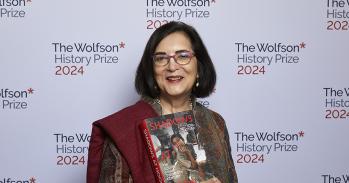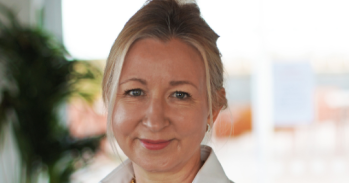
Religious organisations in India are diversifying their ‘business model’ to maintain the loyalty of their followers and attract new devotees.
Religious organisations in India are diversifying their ‘business model’ to maintain the loyalty of their followers and attract new devotees.
Economic theory has much to offer in the study of contemporary religion and religious markets in developing countries.
Dr Sriya Iyer
Businesses often dream up innovative ideas to keep customers and attract new clientele. After all, in a competitive environment, it’s important to stand out from the crowd to keep ahead in the market place. Now, new research has shown that religious organisations may not be so very different.
In fact, scholars have long been interested in how religions change over time as society changes. A common observation has been that religions demonstrate resilience and a capacity to evolve. But what defines such resilience and how do organisations compete to attract new ‘customers’?
Dr Sriya Iyer in the Faculty of Economics has led a large-scale research survey to examine these questions in India, a country in which religion is woven into the cultural, educational and political fabric of people’s everyday lives. The project has involved an interdisciplinary team of researchers from the Faculty of Economics and the Cambridge Judge Business School.
Surveying religion
As part of the survey – one of the first of its kind to examine religion in India – a total of 568 religious organisations (272 Hindu, 248 Muslim, 25 Christian and 23 Sikh and Jain religious groups), spread across seven major Indian states, were interviewed to collect data on their economic, competitive and innovative behaviour. The states, although chosen at random, reflected a broad cross section of Indian society.
‘It was important to ask these organisations not only about their religious service provision but also about their non-religious service provision,’ explains Dr Iyer. ‘Religious organisations might differentiate themselves on the religious spectrum, with respect to their ideology, but also through offering non-religious services that retain and attract adherents.’
The survey was conducted with the help of Indicus Analytics, a research and data analysis firm based in New Delhi, together with a total of 52 researchers spread all over India who helped to conduct the multiorganisation, multiregion study.
Then, using the types of economic theories and mathematical modelling more usually employed in the analysis of firms, Dr Iyer analysed the data in collaboration with economists Dr Chander Velu (Cambridge Judge Business School), Dr Jun Xue (now at the University of Victoria, Canada) and Tirthankar Chakravarty (now at the University of California, San Diego).
‘Economic theory has much to offer in the study of contemporary religion and religious markets in developing countries,’ says Dr Iyer, who received funding for the project from the Pennsylvania-based Metanexus Institute and the John Templeton Foundation. ‘Game theory and theories about industrial organisation, for instance, can tell us about strategic interactions between organisations.’
Using these theories, the research shows that as income inequality increases, the poor demand more non-religious services, and that religious organisations are providing these by responding to this demand in a competitive religious market place.
Innovative service providers
Not only is India a country characterised by the multiplicity of religions but, for any particular religion, followers are often faced with a choice of many organisations within their community. Individuals might therefore, for the purposes of economic modelling, be viewed as customers who adhere to a particular group because it is optimal for them to do so, based not only on the ideology of the group but also on benefits such as education, health, food distribution and other welfare services.
In this competitive environment, as Dr Iyer explains, organisations begin to innovate: ‘Religious groups are showing the same rational economic responses as businesses to changes in the political, ecological and economic environments in which they operate. The results of the survey show that religions are substantially increasing their provision of religious and non-religious services.’
On the one hand, organisations might offer interpretations of doctrine or new practices that set them apart from other organisations. In practice, though, such changes are often difficult to accomplish.
On the other hand, one of the main findings of the project was the remarkable diversification in non-religious services: computer-based learning, health camps, sewing classes, aerobics classes, organised mass marriages for the poor and cow-lending microfinance schemes feature alongside religious services.
Many of the activities appear to have arisen in response to a gap in social welfare. As a result, healthcare programmes such as blood donation, drug rehabilitation programmes and vaccination camps, and responses to societal needs such as old-age homes, informal employment networks and widow welfare programmes have sprung up. Education too is perceived as an area where services can be provided, either in addition to or instead of state-run education.
‘Although variations are observed across religions in the types of services provided, we find that groups act out of a willingness to do good and help where the state may be providing less, and also in response to their competitors,’ says Iyer.
It is this altruistic feature that Iyer emphasises is not often acknowledged: ‘Frequently in discussions about religion and development in poor countries, it is common to highlight the many negative consequences that religion might engender. In contrast, in our study we would like to emphasise the very positive role that many religious organisations are playing in their local communities by building social capital and addressing economic necessity in India.’
Emerging economies
India is in the midst of pronounced economic growth and is predicted to be one of the world’s leading economies within a decade, but the country is also characterised by increasing income inequality. Dr Iyer believes that this is one of the explanations for the innovative behaviour and the resilience of religion across the country: ‘The existence of inequality makes for the provision of more religious and non-religious services by religious organisations as the latter are demanded especially by the least well-off.’
The results of this study could have resonance for emerging nations around the globe who are experiencing appreciable modern economic growth in the context of a large, diverse population, as Dr Iyer explains: ‘We are hopeful that the outcome of our research will have considerable policy relevance for India but also for the management of religiously pluralistic populations in developing countries more widely.’
For more information, please contact Dr Sriya Iyer (sriya.iyer@econ.cam.ac.uk) at the Faculty of Economics (www.econ.cam.ac.uk/).
This work is licensed under a Creative Commons Licence. If you use this content on your site please link back to this page.





